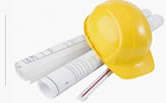A Guide to the Installation of Woodburners
Print Document (Opens in Acrobat Reader)
WOODBURNING STOVES AND CHIMNEYS 
(A) Permit Required
(B) Installation of Stoves
(C) Chimney Connections
(D) Masonry Chimneys and Fireplaces
(E) Metal Chimneys – Exterior and Interior
(F) Metal Chimneys - Interior
(G) Violations and Penalties
Re: The BOCA Basic Mechanical Code/1981
The Somerset Borough Zoning Ordinance #1181
NFPA #211
A. PERMIT REQUIRED
No owner, agent or tenant shall commence with the installation of any chimney, fireplace, stovepipe or wood or coal-burning stove or appliance unless such person first obtains a permit from the Borough of Somerset.
Following completion of the installation and before placing the stove, appliance, chimney or fireplace into use, permittee shall notify the Building Inspector, who shall forthwith inspect the installation to determine that it is in compliance with the requirements of this chapter.
If found to be in compliance with the chapter, the Building Inspector shall countersign the permit and note the date of his inspection. If found to be in noncompliance, the Building Inspector shall notify the permittee, in writing, of the nature of the noncompliance, and the stove, chimney, fireplace or appliance shall not be placed into use until the condition has been corrected and reinspected by the Building Inspector and the permit countersigned by him.
B. INSTALLATION OF STOVES
All wood or coal-burning stoves or appliances shall be at least thirty-six (36) inches from all combustible materials. Where clearance is less than thirty-six (36) inches but more than eighteen (18) inches, the combustible surface shall be protected by one-half (½) inch thick noncombustible insulation board spaced one (1) inch or more from the combustible surface. Adequate space shall be provided to permit air circulation. If clearance is less than eighteen (18) inches but more than twelve (12) inches, the combustible wall shall be protected with a four (4) inch brick veneer wall extending two (2) feet above and two (2) feet beyond each side. All other installation shall be as follows:
1. All wood or coal-burning stoves or appliances that have circulating devices shall be at least twenty-four (24) inches from a combustible surface unless the appliance has a rating for lesser distance from combustible surface.
2. If the distance of any circulating wood or coal-burning stove or appliance is twelve (12) inches to twenty-four (24) inches from the noncombustible surface, the surface shall be protected by one-half (½ ) inch noncombustible insulation board spaced one (1) inch or more from the walls with adequate one (1) inch spacing from the floor to permit air circulation between wall and shield.
3. If the circulating wood or coal-burning stove or appliance is eight (8) inches to twelve (12) inches from the noncombustible surface, the surface shall be protected by one-half (1/2 ) inch noncombustible insulation board covered with No. 28 gauge metal spaced one (1) inch or more from the wall and floor to permit air circulation.
4. Noncombustible floor material shall extend at least eighteen (18) inches beyond the appliance on all sides.
5. Where stove legs are between six (6) and eighteen (18) inches above a combustible surface, a No. 24 gauge sheet metal over closely spaced solid masonry units not less than two (2) inches in thickness.
6. Where stove legs are six (6) inch or less above a combustible surface, a four (4) inch hollow masonry pad should be laid covered with sheet metal not less than twenty-four (24) gauge.
C. CHIMNEY CONNECTIONS
1. All stovepipes shall be equal to or larger than the appliance flue connector.
2. All connector pipes shall be of a minimum No. 24 gauge black pipe or heavier.
3. All connector pipes shall rise from the stove toward the chimney at least one-fourth (¼) inch per foot or more.
4. Single wall connector pipe shall not pass through the floor or wall. However, when necessary, a connector may pass through a wall under the following conditions:
(a) Where a ventilated-type metal thimble is used and is twelve (12) inches greater in diameter than the chimney connector.
(b) Where a metal or burned fireclay thimble is used and the thimble is surrounded on all sides by not less than eight (8) inches of brickwork or equivalent fireproofing material.
(c) When all combustible material is removed for a sufficient distance to provide not less than eighteen (18) inches clearance on all sides of the connector. Any materials used to close this opening must be noncombustible insulating material.
(d) When the section of the connector pipe passing through the combustible material is replaced by a properly installed section of factory-built insulated Class A pipe for solid fuels.
5. All stovepipe shall be a minimum of eighteen (18) inches from a combustible surface.
6. If a stovepipe is twelve (12) inches to eighteen (18) inches from combustible surface, the surface shall be covered with one-half (½ ) inch noncombustible insulation board spaced one (1) inch from the wall or ceiling used as a shield.
7. If stovepipe is nine (9) to twelve (12) inches from combustible surface, the surface shall be covered with one-half (½) inch noncombustible insulation board with a No. 28 gauge sheet metal spaced one (1) inch from wall or ceiling.
D. MASONRY CHIMNEYS AND FIREPLACES
1. Except as herein provided, all chimneys in every building hereafter erected and all chimneys hereafter altered or rebuilt shall be constructed of brick, stone or reinforced concrete or Underwriters Laboratories-listed Class A chimney. No masonry chimneys shall have walls less than four (4) inches in thickness, and all chimneys shall be lined on the inside with fireclay chimney tile set in refractory cement mortar. The lining shall be continuous from the bottom of the flue to its extreme height. No chimney shall be corbelled out more than six (6) inches from a brick wall, and such corbelling shall consist of not less than five (5) courses of brick, unless the chimney requires special construction, and then any specially constructed chimney shall not be corbelled out to such extent that the center of gravity of the chimney would be located so as to endanger the structure.
2. All chimneys shall project at least three (3) feet above the point of contact with a flat roof or two (2) feet above any roof surface within ten (10) feet horizontally of the chimney. Portland cement may be used in the construction of chimneys with the addition of not more than ten percent (10%) by volume of hydrated lime. No chimney in any building shall have wooden supports of any kind. Supports shall be noncombustible and shall rest upon the ground or foundation walls. Concrete footings under new chimneys shall be as hereinbefore specified for concrete footings under foundation walls. All chimneys which are dangerous from any cause shall be repaired and made safe or taken down.
3. The fireback of every fireplace hereafter erected shall not be less than eight (8) inches in thickness of solid brickwork or air cell construction, and not less than twelve (12) inches of stone lined with firebrick. When a grate is set in a fireplace, a lining of firebrick at least two (2) inches in thickness shall be added to the firebrick, or soapstone. Fireclay or cast iron may be used if solidly backed with brick or concrete. All smoke pipes shall enter the chimney through a flue thimble or its equivalent such that the construction shall make a fire-tight joint with the chimney tile flue liner.
4. All flue holes when not in use shall be closed with tight-fitting metal covers. No wooden beams or joists shall be placed within one (1) inch of the outside face of the chimney or flue, whether the same is for smoke, air or any purpose, except for hot-air flues for heating purposes. No woodwork shall be within four (4) inches of the back wall of any fireplace except if a chimney is built in such that the thickness from the flue line is eight (8) inches or more. Necessary woodwork may be placed against the chimney by using one-half (½) inch noncombustible insulation board between and around the wood so placed under the approval of the Building Inspector.
E. METAL CHIMNEYS - EXTERIOR
1. Single wall metal chimneys or unlisted metal chimneys shall not be used in one (1)or two-family (2) dwellings.
2. Metal chimneys shall be riveted, welded or bolted securely supported as necessary for the following:
(a) Strength to resist stresses due to winds.
(b) Adequate bracing and anchoring for stress.
(c) Proper material thickness.
3. Metal chimneys shall not be used inside of ventilating ducts.
4. Metal chimneys shall be supported on properly designed foundations of masonry or on noncombustible material having
a three (3) hour fire rating.
5. Metal chimneys shall extend at least three (3) feet above the highest point of the roof.
6. Exterior metal chimneys used only for residential-type appliances shall have a clearance of not less than eighteen (18) inches from a wall of wood frame construction or other combustible materials.
7. Exterior chimneys eighteen (18) inches or less in diameter shall have a clearance of not less than two (2) inches from a building wall of other than wood frame construction.
8. A metal chimney erected on the exterior of a building shall not be installed closer than twenty-four (24) inches to any door or window or to any walkway.
9. All metal chimneys shall be stainless steel and UL approved.
F. METAL CHIMNEYS - INTERIOR
1. Where a metal chimney extends through any story of a building above that in which the appliance connect to the chimney, it shall be enclosed in such upper stories, within a continuous enclosure constructed of noncombustible materials.
2. The enclosure shall so extend from the ceiling of appliance room to or through the roof.
3. The enclosure shall have a fire resistance rating of not less than one (1) hour if the building is less than four (4) stories in height, and not less than two (2) hours if the building is four (4) stories or more.
4. The enclosure shall provide a space on all sides sufficient to permit inspection and repair but in no case shall it be less than twelve (12) inches.
5. The enclosing walls shall be without openings.
6. Where a metal chimney passes through a roof constructed of combustible materials, it shall be guarded by a ventilating thimble extending not less than nine (9) inches below and nine (9) inches above roof construction, and of a size to provide not less than six (6) inches clearance on all sides of the chimney.
7. All metal chimneys shall be stainless steel and UL approved.
G. VIOLATIONS AND PENALTIES
Any person violating any of the provisions of these regulations shall be fined not more than three hundred dollars ($300.00) and not less than twenty-five dollars ($25.00) or, in default of payment of fine/costs, be imprisoned for not more than thirty (30) days. Continued violations shall constitute a separate offense for each day.
Referenced from the 1981 BOCA Mechanical Code NFPA #211


